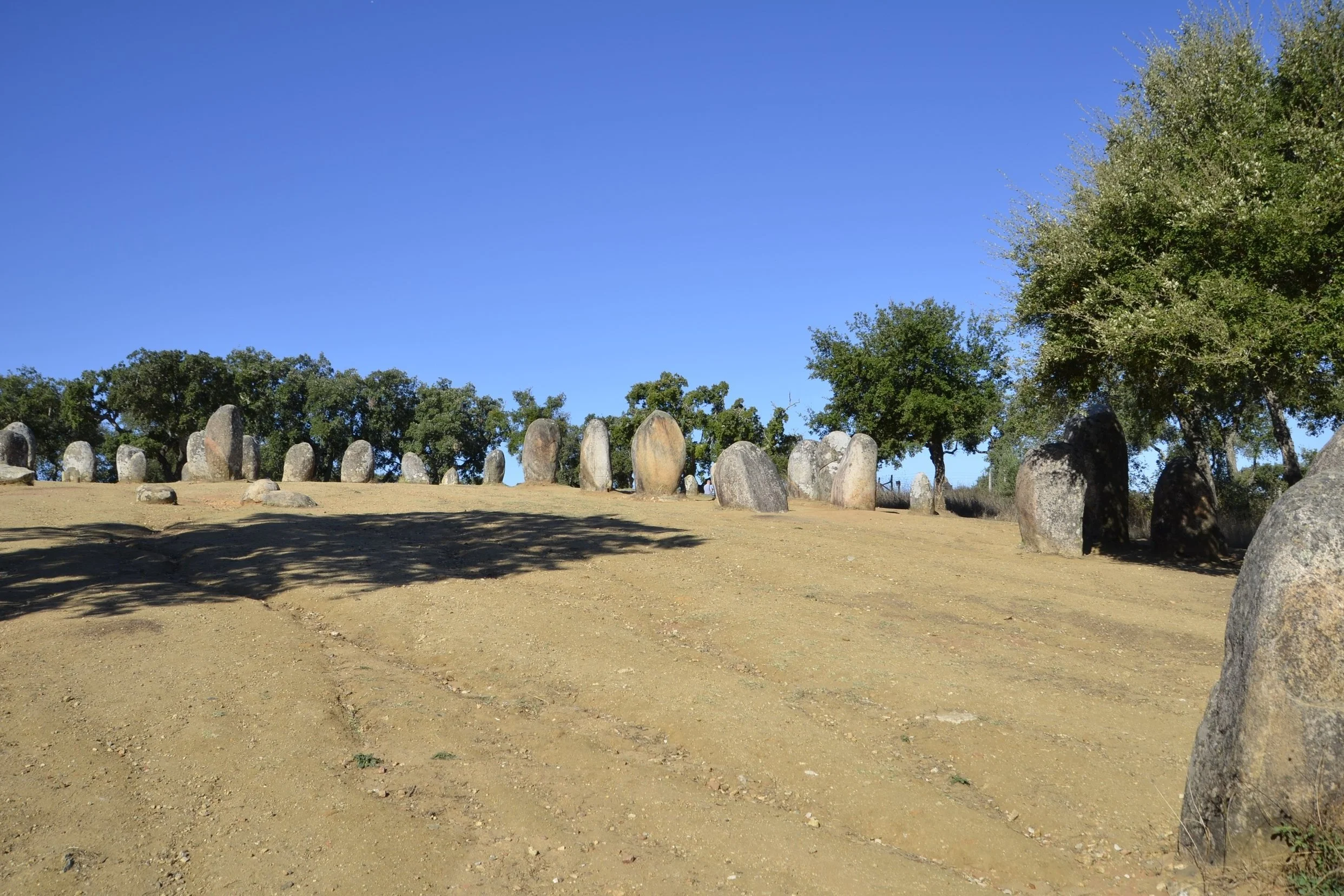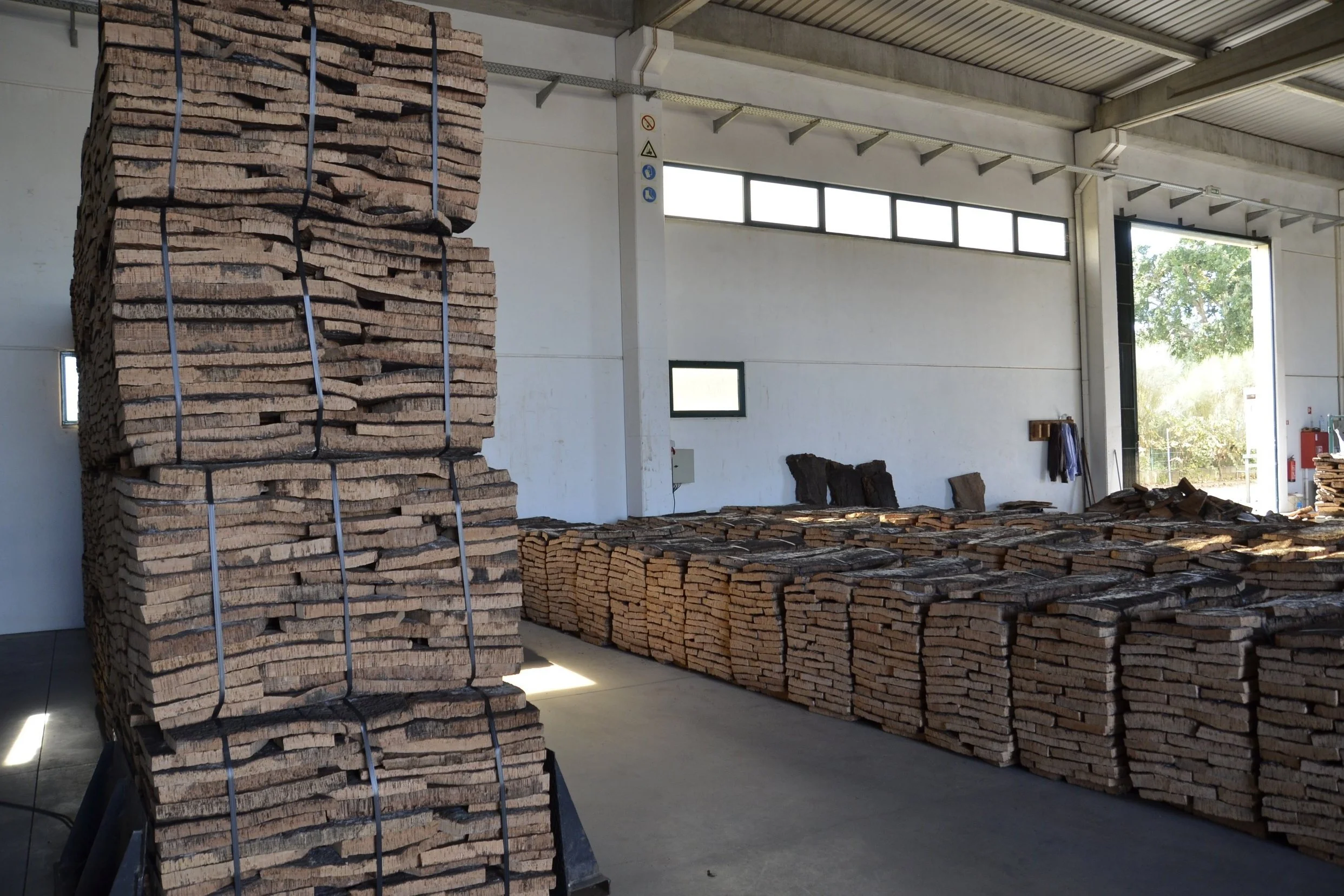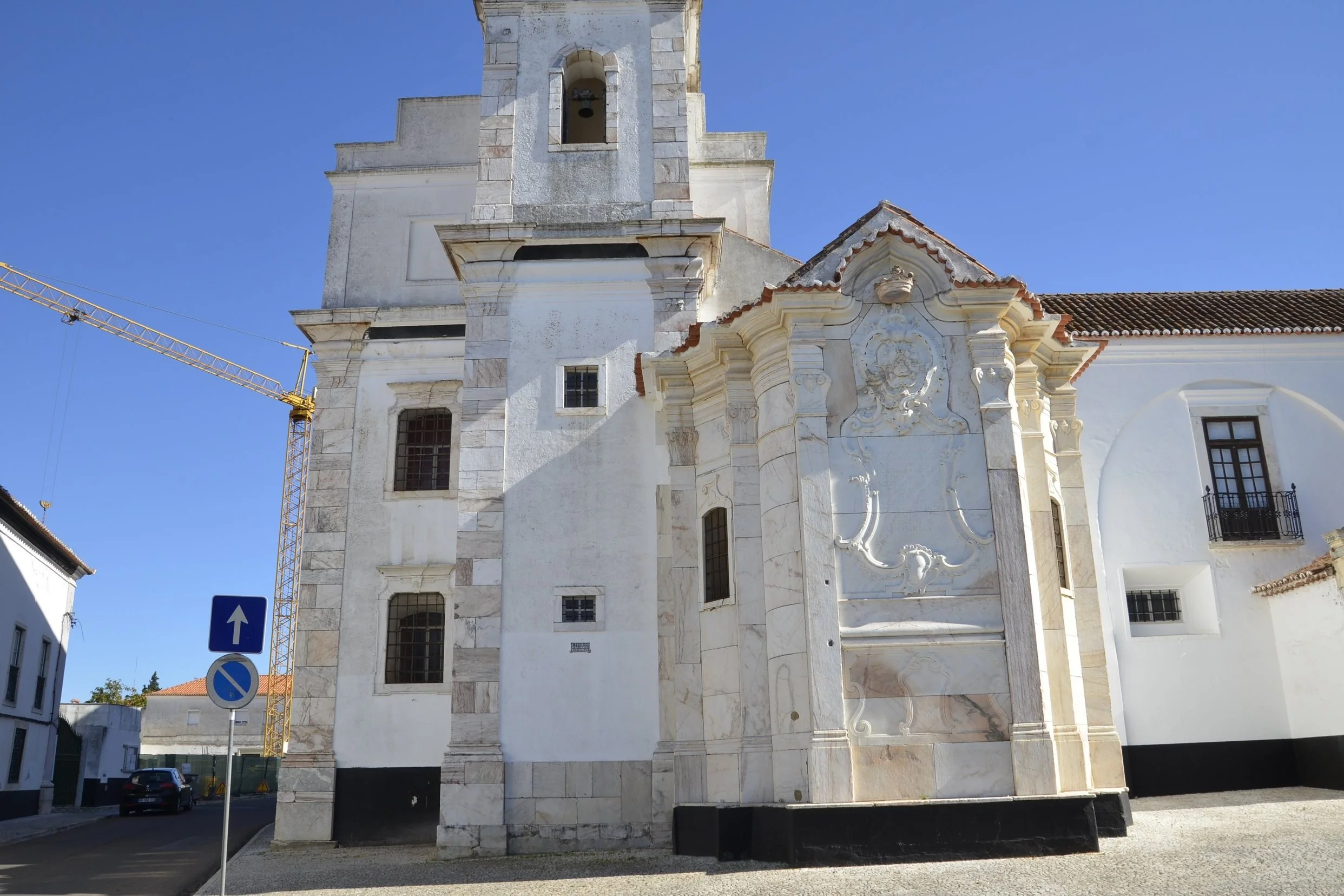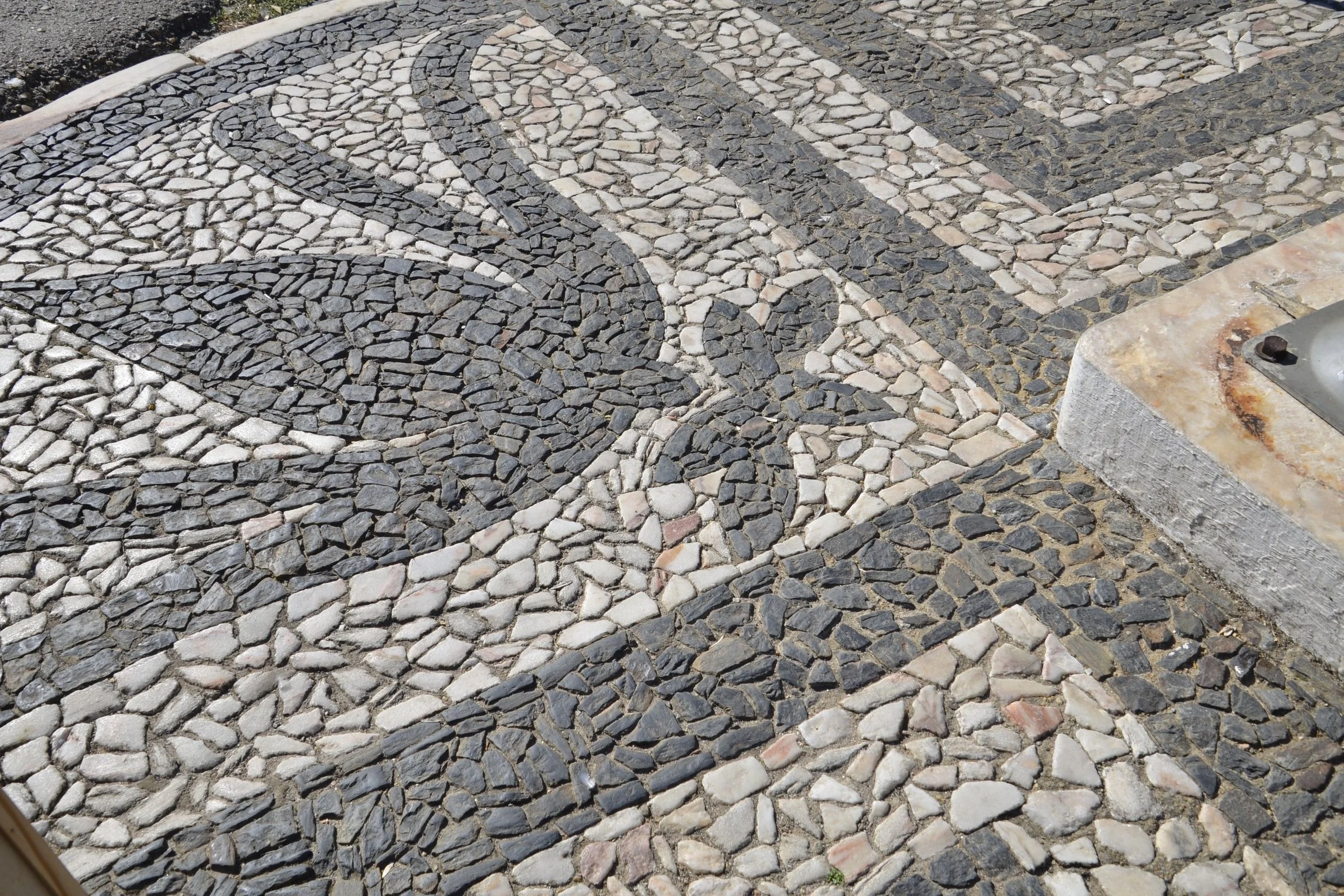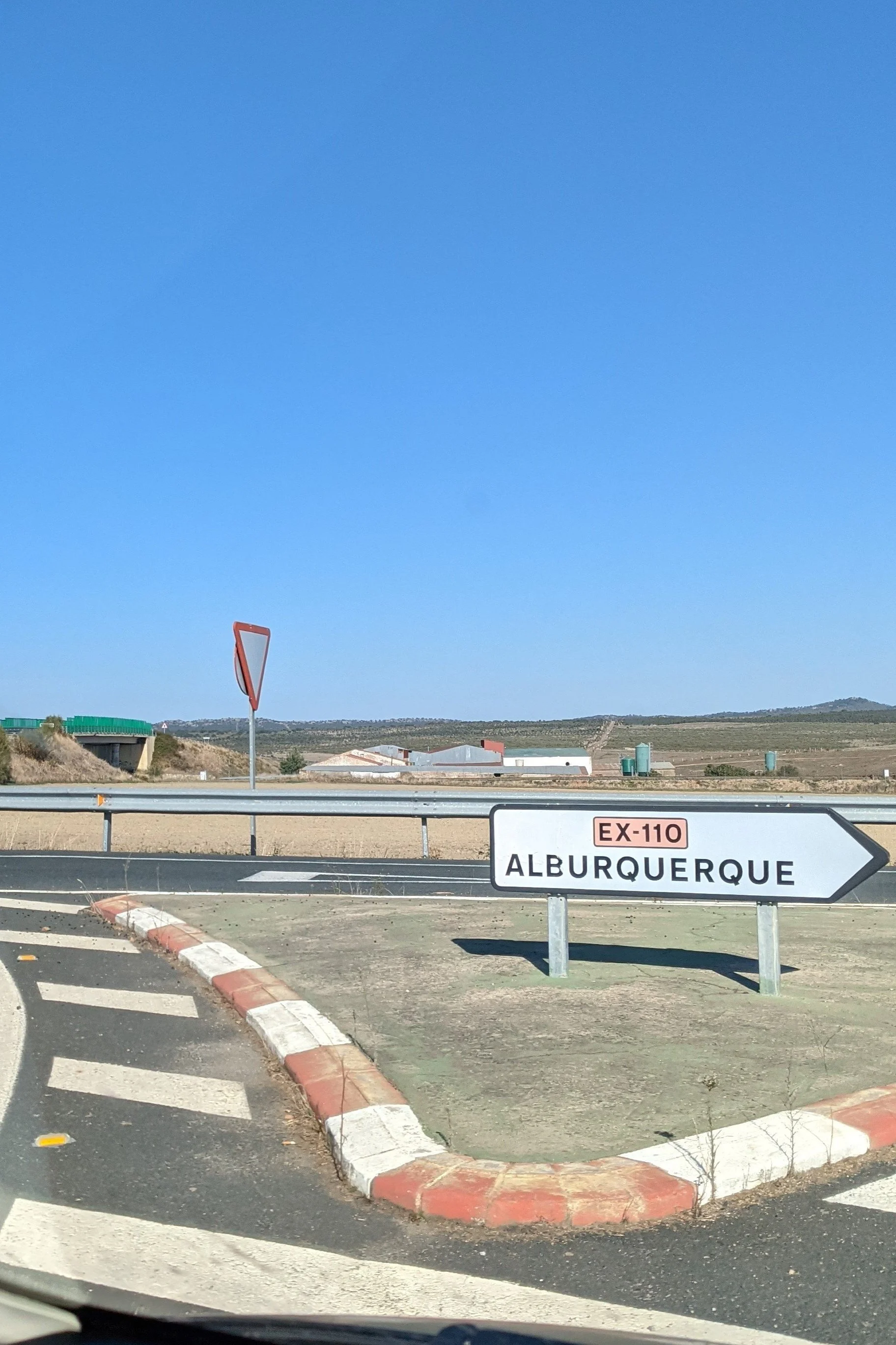Eastern Portugal
We left the gorgeous coast and drove up the interior, wanting to see some of the more isolated towns. The first we drove by was Mertola…
… but we couldn’t go in to explore…
… because we had a restaurant to find for lunch. :) We had done some research and found an excellent place in a little town way off the beaten track, that was literally packed the entire time we were there. I tried one of the specials of the house, Migas with black pork, that had me rolling my eyes back in my head.
The blackened lump was torn up bread pieces combined with tons of garlic and then fried up, while the pork strips were from the local black pigs that feast on the acorns from all of the oak trees growing in this region. We drove by innumerable oak trees…
… that were a mix of “regular” and cork -
As you might guess, those above are cork oaks that have been harvested. I’ll go into more detail on cork production in a bit.
First, I want to share some pics of Cromeleque dos Almendres -
… a megalithic (“big stones”) complex that is older than Stonehenge by 2,000 years. It’s set on a gently sloping clearing in the middle of a cork oak forest.
95 of the egg shaped granite stones are laid out in 3 elliptical ovals, with no other information known about them (other than, like Stonehenge, they are oriented around summer solstice). A few had carvings on them, but they are so worn now, that none of my pictures could capture them. Anyway, it was a quick, neat diversion.
Now on to cork…
The bright red trunk of the recently harvested cork oak stands out quite brilliantly amidst the other trees with their grey-brown bark. We went to a cork production facility to learn about this interesting product. Cork trees are planted or cared for with future generations in mind. The first harvest won’t occur until the tree is 25 years old, and that “virgin” cork is almost unusable, as is the next harvesting 9 years later.
this tree was in the lot of the production facility and is over 200 years old
The cork is still harvested by hand, due to the need to not harm the underlying, living layer just beneath the cork bark. Once harvested, the sheets of cork are left outside to dry for most of the year…
… until they are brought inside, soaked in boiling water and compressed -
… and stored until used to make bottle corks or other products. Corks for bottles are only punched out longitudinally from the bark, due to the pores in the material that run vertically. If the cork was punched out in a vertical direction, the pores would let the wine seep out.
With harvesting only every 9 years, the trees are painted with the last digit of the year they were harvested…
… and the height of the bark removed is a trade secret passed down from father to son, and depends on the age of the tree and diameter of the trunk.
Estremoz is another town that we visited briefly, because of the widespread use of marble on many buildings…
… and sidewalks…
… due to the surrounding marble quarries. The city was really pretty and clean, and we have pegged it for a future stay. As we drove through eastern Portugal, we were surprised by all the towns with still-standing castles, both short…
… and tall.
A town that we stayed in, Evora, didn’t have a castle, but it did have Roman ruins…
… and a Gothic cathedral mostly built between 1280 and 1340…
… with a roof we could explore (no…really??), noting the stone roofing material…
… great views…
… and a statue of a pregnant Virgin Mary from the 15th century -
On our way out of Portugal, we did stop into a walled city, Marvao…
… that was built on a granite escarpment that rises suddenly out of the plains…
… again, giving awesome views.
I loved how the castle was built into or arising out of the surrounding rocks -
As we drove back into Spain, we were surprised to find how close to home we were!






